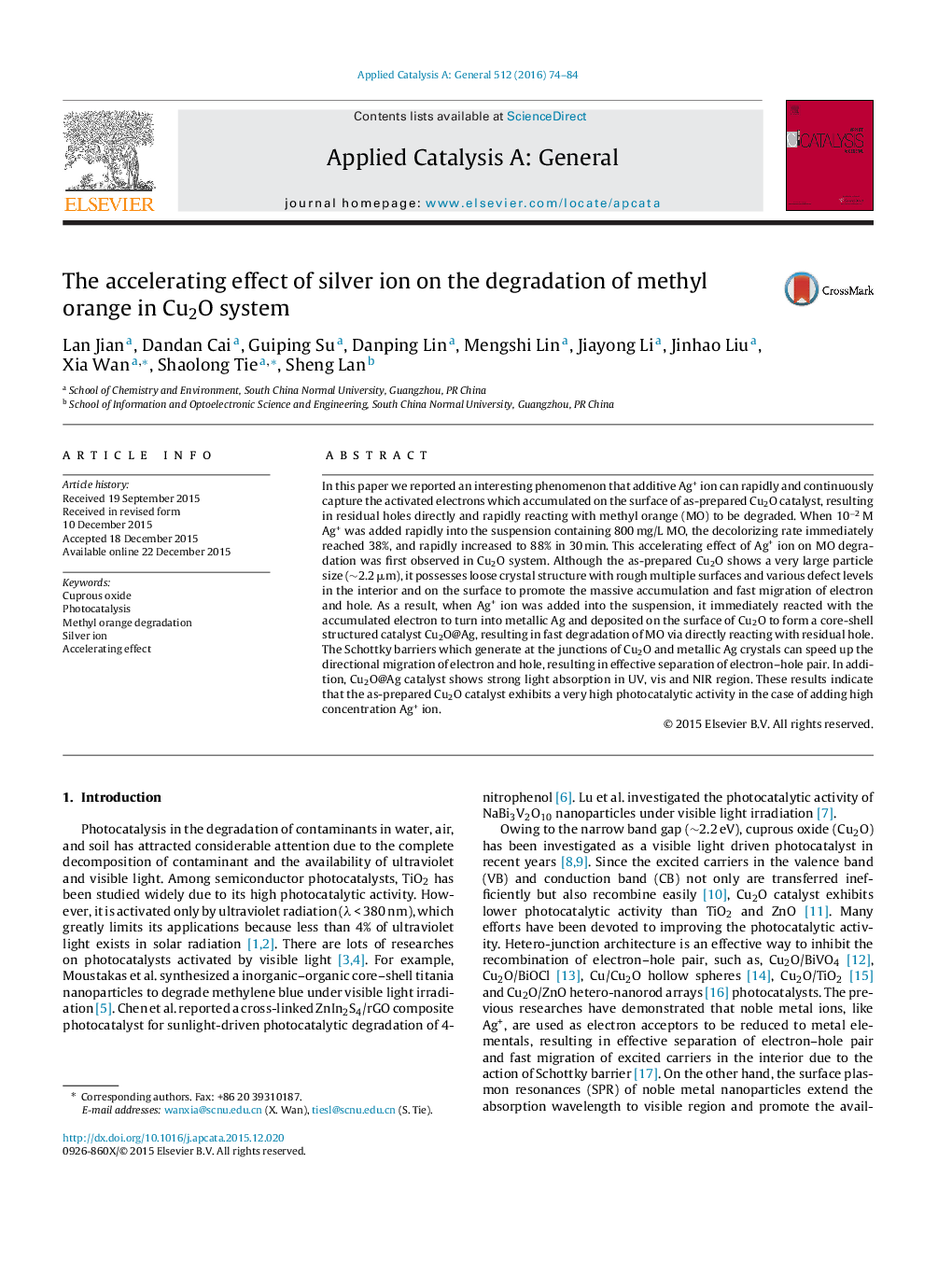| Article ID | Journal | Published Year | Pages | File Type |
|---|---|---|---|---|
| 38887 | Applied Catalysis A: General | 2016 | 11 Pages |
•The accelerating effect of Ag+ on methyl orange (MO) degradation in Cu2O system was first observed.•By fast reacting with electron, Ag+ was reduced to Ag0 and deposited on the surface to form Cu2O@Ag catalyst.•The degradation of MO was totally controlled by photogenerated hole.•Cu2O@Ag catalyst shows strong light absorption in UV, vis and NIR region.•The as-prepared Cu2O exhibits very high degradation efficiency by adding high concentration Ag+.
In this paper we reported an interesting phenomenon that additive Ag+ ion can rapidly and continuously capture the activated electrons which accumulated on the surface of as-prepared Cu2O catalyst, resulting in residual holes directly and rapidly reacting with methyl orange (MO) to be degraded. When 10−2 M Ag+ was added rapidly into the suspension containing 800 mg/L MO, the decolorizing rate immediately reached 38%, and rapidly increased to 88% in 30 min. This accelerating effect of Ag+ ion on MO degradation was first observed in Cu2O system. Although the as-prepared Cu2O shows a very large particle size (∼2.2 μm), it possesses loose crystal structure with rough multiple surfaces and various defect levels in the interior and on the surface to promote the massive accumulation and fast migration of electron and hole. As a result, when Ag+ ion was added into the suspension, it immediately reacted with the accumulated electron to turn into metallic Ag and deposited on the surface of Cu2O to form a core-shell structured catalyst Cu2O@Ag, resulting in fast degradation of MO via directly reacting with residual hole. The Schottky barriers which generate at the junctions of Cu2O and metallic Ag crystals can speed up the directional migration of electron and hole, resulting in effective separation of electron–hole pair. In addition, Cu2O@Ag catalyst shows strong light absorption in UV, vis and NIR region. These results indicate that the as-prepared Cu2O catalyst exhibits a very high photocatalytic activity in the case of adding high concentration Ag+ ion.
Graphical abstractThe as-prepared Cu2O has a loose crystal structure with rough surfaces and various defect levels in the interior of the band gap and insides of the CB and VB to promote the massive accumulation and fast migration of electrons and holes. When high concentration of Ag+ ion was added into the suspension, it immediately reacted with the accumulated electrons and deposited on the surface to form a core–shell structured catalyst Cu2O@Ag, resulting in fast degradation of methyl orange via directly reacting with residual hole. Therefore, Cu2O catalyst exhibits very high photocatalytic activity in the case of adding high concentration Ag+ ion, making it a promising catalyst in the degradation of dye wastewater.Figure optionsDownload full-size imageDownload high-quality image (164 K)Download as PowerPoint slide
